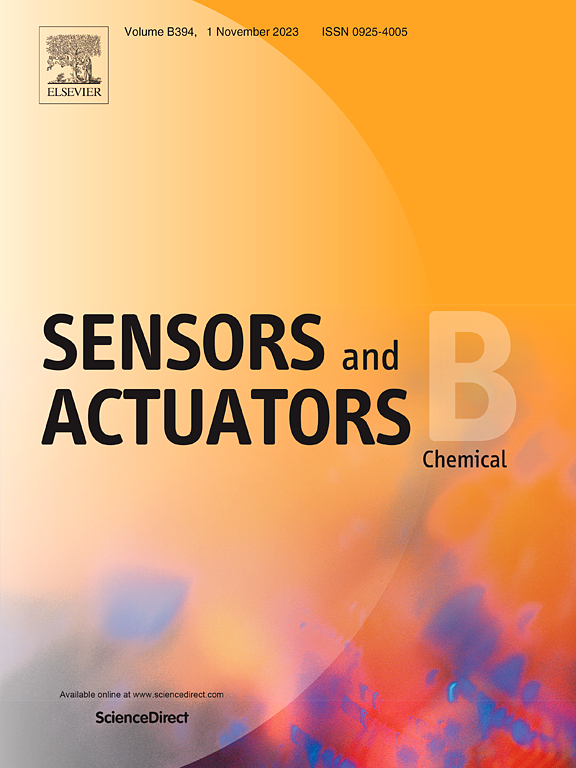全印刷柔性自供电湿度传感器
IF 8
1区 化学
Q1 CHEMISTRY, ANALYTICAL
引用次数: 0
摘要
由于供电形式的限制,现有的湿度传感器往往体积大、结构复杂。传统的自供电湿度传感器器件制备工艺复杂,湿度响应范围窄,最大电压响应低,极大地限制了其应用范围。本文首次提出了一种基于电化学原理的纸质全印刷柔性自供电湿度传感器(FSHS)。这种创新的传感器与传统的丝网印刷技术相结合,可以集成低成本,可定制的2D和非接触式湿度传感设备。将阳极墨水、阴极墨水和传感层作为平面数字间电极印刷在纸上,形成具有自供电和湿度传感功能的FSHS。该传感器制备工艺简单,响应范围宽(11%-95% RH),超高电压响应(1.03 V),长期稳定性好,响应/恢复时间快,电压响应与湿度之间线性良好。它表现出非凡的灵活性,在极端弯曲条件下几乎没有电压变化。此外,该FSHS可以制成各种形状/图案,使其成为可穿戴呼吸检测设备,非接触式按钮和特殊环境下的能量存储的理想选择。本文章由计算机程序翻译,如有差异,请以英文原文为准。

All-printed flexible self-powered humidity sensor
Existing humidity sensors are often large in size and complex in structure due to the limitations of the power supply form. Traditional self-powered humidity sensor devices also often require complex preparation processes or have a narrow humidity response range and a low maximum voltage response, which significantly limits their application range. Herein, a paper-based fully printed flexible self-powered humidity sensor (FSHS), based on electrochemical principles, is proposed for the first time. This innovative sensor, combined with conventional screen-printing technology, enables the integration of low-cost, customizable, 2D, and non-contact humidity sensing devices. The anode ink, cathode ink, and sensing layer are printed on the paper as planar interdigital electrodes to form a FSHS with self-powered and humidity sensing functions. This sensor features a simple preparation process, a wide response range (11%-95% RH), ultra-high voltage response (1.03 V), excellent long-term stability, rapid response/recovery times, and excellent linearity between voltage response and humidity. It demonstrates exceptional flexibility, with virtually no change in voltage under extreme bending conditions. Additionally, this FSHS can be made into various shapes/patterns, making it ideal for wearable respiratory detection devices, non-contact buttons, and energy storage in specialized circumstances.
求助全文
通过发布文献求助,成功后即可免费获取论文全文。
去求助
来源期刊

Sensors and Actuators B: Chemical
工程技术-电化学
CiteScore
14.60
自引率
11.90%
发文量
1776
审稿时长
3.2 months
期刊介绍:
Sensors & Actuators, B: Chemical is an international journal focused on the research and development of chemical transducers. It covers chemical sensors and biosensors, chemical actuators, and analytical microsystems. The journal is interdisciplinary, aiming to publish original works showcasing substantial advancements beyond the current state of the art in these fields, with practical applicability to solving meaningful analytical problems. Review articles are accepted by invitation from an Editor of the journal.
 求助内容:
求助内容: 应助结果提醒方式:
应助结果提醒方式:


